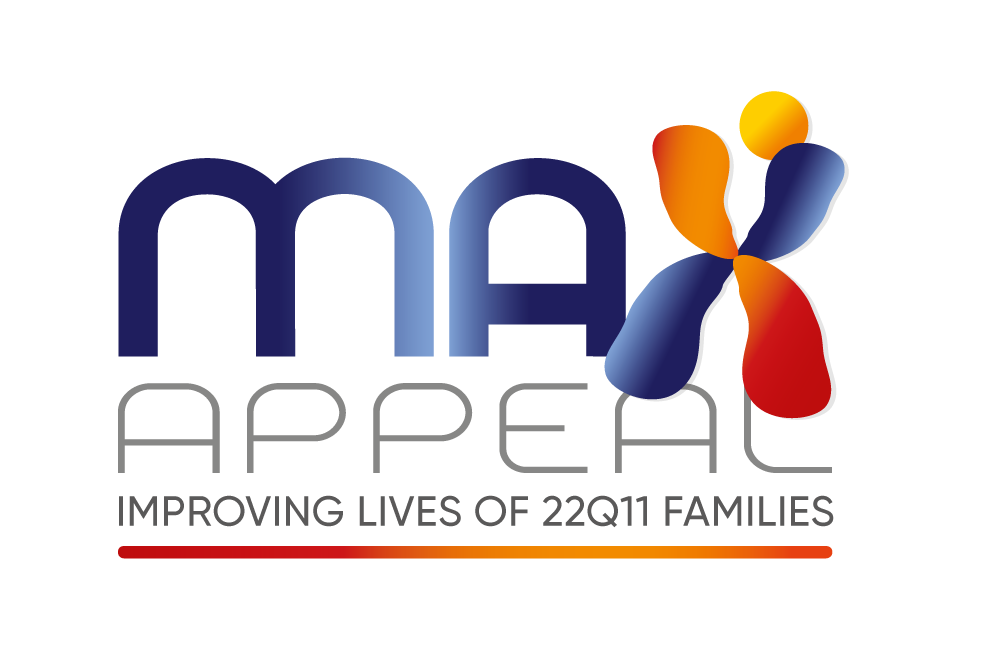Feeding Problems in Infancy
Introduction
Difficulty in feeding is common with children with a 22q11.2 deletion. This is otherwise known as dysphagia or difficult swallowing and can result from problems with: moving food in the mouth; transferring food from the mouth, past the airway (trachea), and to the tube that leads to the stomach (oesophagus); or moving food down the oesophagus and into the stomach or intestines.
Children with a 22q11.2 deletion frequently have heart or palatal problems and their feeding difficulties have previously been attributed to these conditions.
However, the severity and persistence of the feeding problems often noted are far greater than for other children with heart or palatal problems alone, suggesting that there is another factor
Infancy
The babies with feeding problems typically had a history of gagging, vomiting, or irritability with feeds, and slow or difficult advancement of feeding volume.
Although most babies had a good suck on a pacifier and were initially interested in the nipple, many stopped sucking after several sucks or they gagged and regurgitated. After taking several ounces either by mouth or by a tube many infants became irritable, or congested.
X-ray studies (modified barium swallow) performed on many babies suggested the presence of abnormal movements of the back of the throat which increased the tendency for formula to go up into the nose.
In addition, there was a lack of co-ordination in the opening and closing of the entrance to the oesophagus which may have made it harder for the baby to clear formula from his/her throat. Some of the babies also had abnormal movement in the oesophagus which resulted in formula going up the oesophagus into the mouth rather than down to the stomach.
Additional studies (upper Gastro Intestinal, pH probe, milk scan) in infants with recurrent vomiting often documented gastro-oesophageal reflux (food going back up in to the oesophagus from the stomach) and /or delayed emptying of the stomach.
This suggests that abnormal movement (dysmotility) may affect the entire gastrointestinal tract.
Early childhood
Many children preferred to be spoon fed instead of bottle feeding.
This made sense in the light of the swallow studies in that the children concentrated on swallowing a single spoonful of food before they accepted the next bit of food.
Congestion sometimes continued to be a problem, although it tended to be less with spoon feeding than with a bottle.
Most of the children had little to no problem advancing with spoon feedings until they graduated up to the junior or early table foods.
Cup drinking was often more difficult for the child because of the inconsistent volume delivered by the cup and the rapidity with which the liquids flow. Therefore many children preferred to sip or gulp (consecutive swallows without taking a breath) their drinks.
This information was taken from a study at the Children's Hospital of Philadelphia:
Approximately 30% of children in the sample have a history of feeding difficulties.
Patients with feeding problems are not more likely to have other medical problems. For example, the frequency of heart disease, palatal problems, and calcium problems is no different in those children with feeding difficulties versus those children without feeding problems.
For the majority of the children affected parents report difficulty with feeding beginning in the new-born period. Almost half the parents describe their children as a slow feeder with 30% reporting a poor suck.
Likewise half the children had frequent vomiting with feeds. One-third had evidence of fluid from feeds coming back up into the nose. Almost one-fifth had chronic nasal congestion with liquids.
Half of children who advanced to solids had significant difficulty with chewing, refused crunchier textures, or only eating small meals.
The types of problems encountered differed depending upon the age of the child. Aspiration of feeds, where food passes down the trachea and on to the lungs, was also noted.
The future
The optimum aim would be to prevent feeding problems from occurring in the first place. But first we need to have a better understanding of what is responsible for the dysmotility. Because the 22q11.2 deletion has been associated with abnormal migration of some early cells that can become muscle or nerve cells, it is not yet clear whether feeding difficulties are neurological, muscular, or related in some way to calcium abnormalities affecting these children. The good news is that function improves with good practice so that almost all children with a 22q11.2 deletion can look forward to eating and growing normally.
